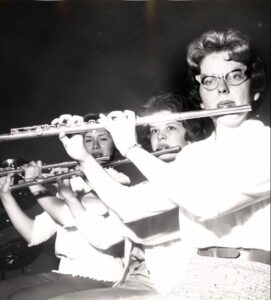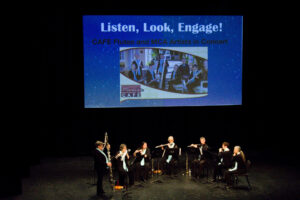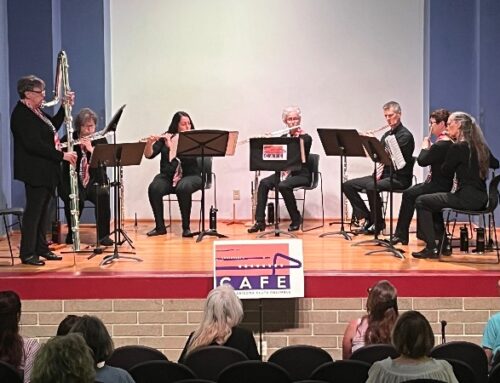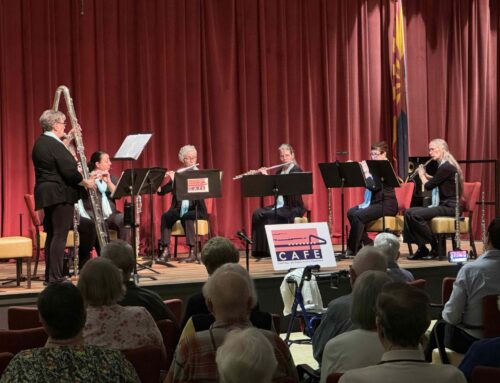The Evolution of the Flute Choir: A Journey Through Time and Its Role in Today’s Music Scene
At CAFE Flutes, we pride ourselves on being part of a rich tradition that has evolved significantly over time: the flute choir. From its humble beginnings to its prominent place in contemporary music, the flute choir has undergone an incredible transformation, carving out a unique niche in the musical world. Let’s take a journey through the evolution of the flute choir and explore its vital role in today’s music scene.
The Beginnings: Early Ensembles and Experimentation
The concept of a flute choir, where multiple flutes of varying sizes come together to create a harmonious sound, began taking shape in the late 19th and early 20th centuries. Before this period, the flute was primarily seen as a solo or orchestral instrument. However, as composers and musicians began to experiment with the flute’s versatile range, the idea of assembling multiple flutes to create a richer, more diverse sound started gaining traction.
One of the early adopters of this idea was the French composer Paul Taffanel, who founded the modern French school of flute playing. His work laid the groundwork for what would become the modern flute choir. By encouraging his students to explore ensemble playing, Taffanel helped to popularize the idea of flutists performing together in a cohesive group.
The Growth: Mid-20th Century Flourishing

Flute Choirs used to consist of solely C flutes
The mid-20th century marked a significant period of growth for the flute choir. This era saw the formalization of the flute choir as a legitimate ensemble type, distinct from other woodwind groups. During this time, the introduction of new flute models, such as the alto and bass flutes, expanded the sonic possibilities for flute ensembles.
Composers like John Rutter and Gordon Jacob began writing specifically for flute choirs, recognizing the ensemble’s potential for creating a rich tapestry of sound. These compositions showcased the flute choir’s ability to produce a wide range of tones and dynamics, from the delicate and ethereal to the powerful and resonant.
The Modern Era: A Flourishing Community
Today, the flute choir is a well-established and respected ensemble in the global music community. This transformation is due in large part to the efforts of flutists and educators who have championed the ensemble’s unique sound and versatility.

Today, flute choirs like CAFE include C, piccolo, alto, bass and contrabass flutes
At CAFE Flutes, we have witnessed firsthand the flute choir’s ability to captivate audiences and bring people together through music. Like many others worldwide, our ensemble strives to push the boundaries of what a flute choir can achieve. We incorporate a variety of musical styles into our repertoire, from classical and contemporary to jazz and folk, demonstrating the flute choir’s adaptability and wide appeal.
The Role of the Flute Choir in Today’s Music Scene
The flute choir holds a unique and important position in today’s diverse and ever-changing music scene. Here’s how we see its role evolving and impacting the world of music:
Educational Outreach and Community Engagement

Creating a lasting memory
One of flute choirs’ most significant contributions today is education and community outreach. Flute choirs often engage with local communities, schools, and senior centers, providing accessible and interactive musical experiences. At CAFE Flutes, we believe in the power of music to inspire and connect people. Our interactive concerts, where we introduce our audience to the different flutes and encourage participation, are a testament to this belief.
By bringing music to diverse audiences, flute choirs help to foster a greater appreciation for the arts and encourage lifelong learning. Whether through educational programs for young students or performances in senior communities, flute choirs play a crucial role in making music more accessible and enjoyable for everyone.
Expanding the Repertoire
Flute choirs continue to expand their repertoire, commissioning new works and arrangements that showcase the ensemble’s unique capabilities. Contemporary composers are increasingly drawn to the flute choir, intrigued by its potential for creating innovative and engaging music.
At CAFE Flutes, we are committed to exploring new musical territories and collaborating with composers to bring fresh and exciting pieces to our audiences. This dedication to expanding the repertoire not only enriches the musical landscape but also ensures that the flute choir remains a dynamic and evolving ensemble.
Building a Sense of Community

CAFE playing at a library
Flute choirs have a special ability to build a sense of community among musicians and audiences. The ensemble’s collaborative nature fosters strong connections between its members, while the engaging and interactive performances create a shared experience for audiences.
In a world where social isolation is becoming increasingly common, the sense of connection and community that flute choirs provide is more important than ever. At CAFE Flutes, we see our ensemble as a family, and we strive to extend that sense of belonging to our audiences, creating memorable and meaningful musical experiences.
Conclusion: The Future of the Flute Choir
As we look to the future, we are excited about the continued evolution of the flute choir and its potential to impact the music world. The flute choir’s journey from its experimental beginnings to its prominent place in today’s music scene is a testament to the power of innovation, collaboration, and a shared love of music.




